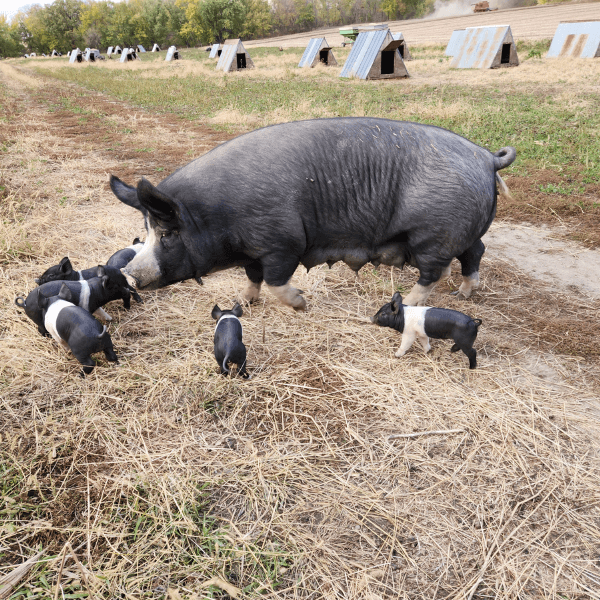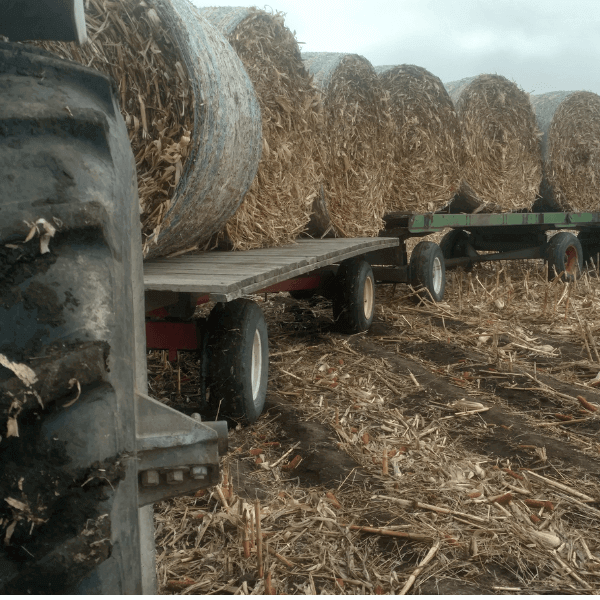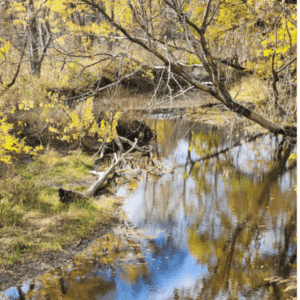Autumn Dispatch from the Farm: A Season of Sustainable Practices
December 14, 2023John Gilbert, Gibralter Farms
In 2023, the Gilbert family, along with four other hog farming families, celebrated 25 years of partnership with Niman Ranch. The Gilberts were the nineth family to join founding hog farmer, Paul Willis, in marketing “free-range” pork branded Niman Ranch soon after the 1998 hog market crash. In a time when the art of hog farming was transitioning to the big business of pork production across the country, these farmers were dedicated to raising hogs in their natural environments, with outdoor access, and preserving family-scale farming on their generational farms.
If I can be so bold, let me make the following observation. What’s important is that you realize we are only one of many farmers in the Niman Ranch family. I can’t say we are better than other farms, but I believe we are typical. We make our decisions about farm practices based on what works best in our situation. Our goal is to be on the path toward sustainability. I feel confident after many years getting to know and work with other Niman Ranch farmers, that others may not do things exactly as we do, but their motivations and philosophies are very similar. Building friendships and working toward a common purpose – Niman Ranch’s mission of raising humanely the best tasting pork – is just one of the great things about being part of the farmer network.
After our third year of considerably below normal rainfall, plus a couple extreme hot spells, had us all apprehensive about what harvest would be like, we started grain harvest a little sooner than some years, partially because pastures for the cattle our son and daughter-in-law, John and Sarah, are raising for their direct marketing business were running short. Cattle can generally be fed through much of the fall in harvested fields.
Corn and soybean grain harvests proved to be highly variable. Higher and more rolling areas were hurt considerably by the heat and drought. Lower, heavier ground did extremely well. Improving the water holding ability of all our soils is the best defense we have for hot and dry spells. That is our primary motivator in pursuing improved soil health.
Overall, we had close to an average harvest. Our objective each crop season (including the small grains, hay and grazed crops) is not to have a maximum yield. We strive to have enough! Our obligation as farmers is to use what we have to take care of our needs and obligations. I make this point to underscore the critical purpose of why having animals is a critical part of our farm. We believe balance is a vital component of sustainability.

Near the end of September, we moved the sows (mother pigs) that had spent the summer lounging in the mud in the hilltop pasture, back to the huts in the field to prepare for farrowing (birthing piglets). Farrowing went well, as it generally does in the fall. Warm days and cool nights work well in this system. The sows graze the clover as well as eat feed we provide, and generally produce ample milk for their piglets to grow quickly. In a matter of a few days, the pigs are following their mothers out of the huts, learning to root, explore and play with other litters. Before long they are exploring outside the electric fence boundary, running back at the first sign of danger, or when their mothers call. The trick is to get everyone out of the field and into the deeply bedded hoop barns before it gets too cold for the unheated water systems we use in the field.
Over the years, we’ve found this type of rearing, plus not weaning until at least six weeks of age, gives the pigs a strong start, making raising without antibiotics in deep bedding a very successful system for us.

One of the most critical aspects of both harvest and our livestock rearing is ensuring we get enough corn stalks baled to provide bedding for the coming year. After corn is combined, we harvest a portion of the stalks from our flattest fields, as removing stalks, or tilling them under as many farmers do, leaves the fields more prone to erosion. We plan to take half and leave half of 8-10 percent of the acres we have in corn. A neighbor is hired to do the baling, but we haul and store the bales near where we will use them. We also use straw from our small grains like oats for bedding, but corn stalks are the quickest and easiest way to get the volume needed. Bedding provides many benefits for livestock, from keeping them dry and healthy, to helping moderate temperature extremes, to providing ample material to chew on and play with. An often-overlooked benefit is that bedding helps absorb and stabilize the nutrients in animal manure, providing a means to return to our fields much of what we removed with harvest as both grain and fodder. We do our best to return bedded manure to areas where stalks are baled.
The change in seasons is marked by a progression of activities. Beaver, a keystone species, start early to rebuild their dams, especially important with the low water levels in Southfork this fall. The vultures that love to soar on the thermals created in the summer by the Southfork valley left in mid-October, just ahead of the one significant rain event we had this fall. Gradually but steadily, the contingent of bald eagles that over winter in the valley are returning. Last year we counted close to three dozen in groups that include mature and immature birds. Each winter it seems more are here. And a sign that fall has been mild, growing flocks of Canadian geese fly overhead, honking loudly just about sunset each day, returning to spend the night on two ponds in the area. They always seem to know when the last minute is to head south until spring.

Getting ready for winter involves making sure adequate preparations are made for cold and snow. It’s tempting to use last year’s weather as a template for this year’s preparation. However, over preparing always ends up being better than under preparing. Winterizing tractors, parking machinery, making sure heaters that keep livestock waterers open are working and keeping manure hauled are important parts of preparing. We always seem to have “projects” started earlier in the year that we try to finish before winter. But some of those will have to wait until next time.
I must thank you for all you do to support Niman Ranch. Being part of this organization always feels like being part of an extended family. We close by extending our best wishes to everyone for the coming holidays and wishing everyone a prosperous 2024.
